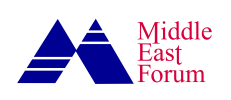On July 6 and 7, 2025, Houthi attacks sank two Greek-managed bulk carriers, the Magic Seas and the Eternity C, using drone boats, missiles, rocket-propelled grenades, and small arms. At least four crew members died; others remain missing and may be held hostage. Insurance markets reacted and shipping routes adjusted overnight. Costs to Houthi disruptions mount. On July 10, 2025, Israel intercepted a Houthi ballistic missile aimed at Israel’s Ben Gurion Airport.
These attacks suggest proxy threats do not vanish when state sponsors like Iran suffer defeat; the Houthis operate with more persistence and resilience than Hamas and Hezbollah, even after a U.S. bombing campaign targeted the group. The Houthis’ ability to absorb damage and regenerate requires a shift in strategy. Conventional airstrikes and temporary deterrence do not suffice.
Here, Ukraine could suggest answers.
Ukrainian forces use fleets of cheap drones to destroy expensive Russian assets.
In the face of an existential threat, Ukrainian forces rewrote the playbook. They turned drone warfare from a niche tactic into a scalable, decisive capability. Ukrainian forces use fleets of cheap drones to destroy expensive Russian assets. A recent report focused on modernized T-72 tanks. Sixty small drones, each worth up to $1,000, overwhelmed and destroyed a platform that can cost $3 million. That cost asymmetry exposes a new reality that attritable platforms now dominate the modern battlefield.
Meanwhile, U.S. operations against the Houthis ran up billion-dollar price tags. Each Tomahawk and precision-guided munition adds to the total. While the results inflicted damage, they did not neutralize the Houthi threat. And that price tag may have factored into President Donald Trump’s decision to halt the air campaign once the Houthis paused attacks on maritime shipping.
With that ceasefire shredded, the mission must resume, but in a way that embraces strategic efficiency. The solution is to unleash a campaign of drone attrition against the Houthis. Mass produce low-cost unmanned aerial systems. Deploy them in the thousands. Maintain continuous airborne presence over every Houthi-controlled area. Track movement. Fix targets. Kill without delay.
Houthi leaders have already adapted to traditional Intelligence, Surveillance, Reconnaissance methods. They hide in caves and bunkers and limit use of equipment that might emit detectable signals. But they still must surface and move to operate. When they do, swarms of loitering drones can eliminate them. The U.S. should saturate the airspace with expendable assets. Such a strategy shifts the cost equation. The Houthis must spend time, energy, and manpower just to survive. Their commanders must live underground. Their logistics will ground to a halt. A group that cannot move cannot fight. And a group that cannot fight, cannot hold territory or threaten commerce.
Instead of putting U.S. forces in harm’s way, unmanned systems take their place.
This strategy also seeks to anticipate criticism of further U.S. involvement in Middle East. Instead of putting U.S. forces in harm’s way, unmanned systems take their place. The drones also extend the range over land, removing the need to put boots on the ground. Finally, this strategy addresses risks to U.S stockpiles. By leveraging massive numbers of low-cost drones, the U.S. can save its expensive missiles for theaters that may require their unique capabilities in the Pacific or Indian oceans.
Strategic success no longer comes in shock-and-awe packages. It comes through smart, sustained operations that deny the enemy space to operate. Attrition, when applied consistently and aggressively, produces strategic collapse.
The United States and Israel possess the industrial base and technological know-how to deploy this strategy. Secretary of Defense Pete Hegseth’s recent drone announcement signals the United States now has the will.








